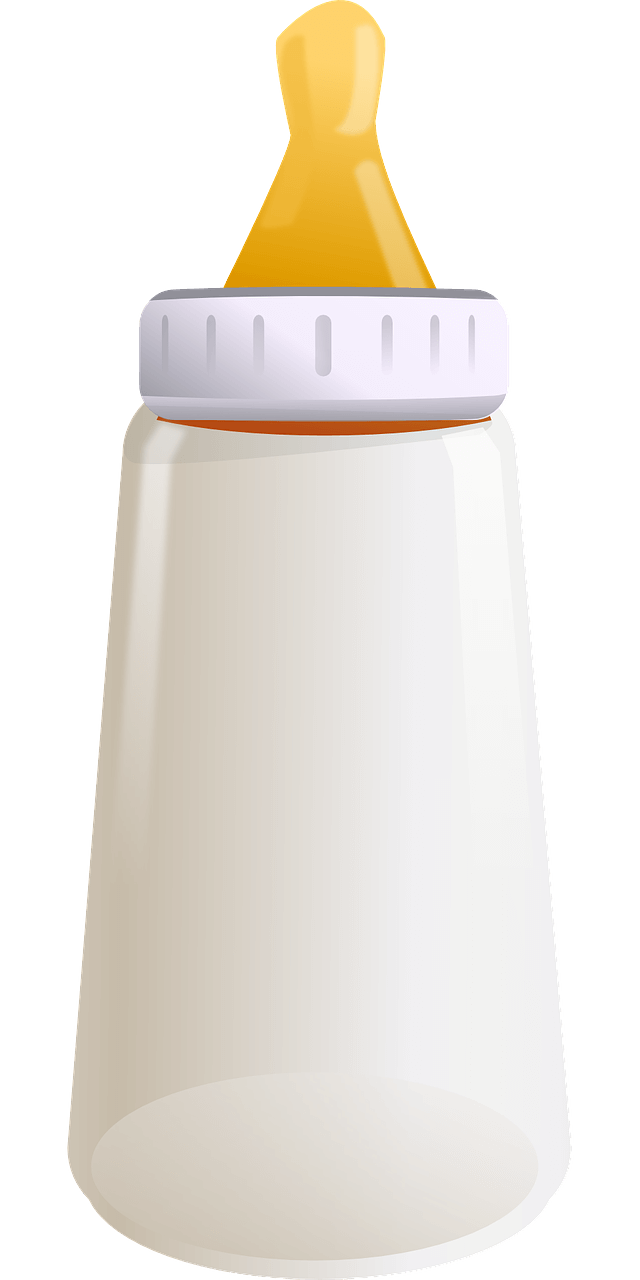Introduction
A. Brief Description of the Issue: When a Baby Doesn’t Like Formula
As the title suggests, the issue we are exploring is a common one faced by many parents and caregivers – when a baby doesn’t like formula. This problem often presents itself through visible signs, such as the baby refusing to drink formula, becoming fussy during feeding time, or not consuming the expected amount of formula for their age and weight.
B. Importance of Understanding and Solving this Problem
Understanding why a baby doesn’t like formula and knowing how to address this issue is of great importance. The nourishment of a baby during the first year of life is crucial for their growth and development [1]. Formula feeding provides an alternative or supplement to breast milk, offering essential nutrients that babies need [2].
However, when a baby refuses the formula, it might lead to feeding issues, causing undue stress for both the baby and the caregiver. Moreover, inadequate nutrition may have serious health implications for the baby [3]. As such, finding solutions to this problem can help ensure that the baby receives adequate nutrition, thus promoting their health and well-being.
Understanding Formula Feeding
A. Brief History and Purpose of Formula Feeding
Infant formula, a product designed to mimic breast milk, has been available for over a century. In its earliest forms, formula was often a homemade mix of cow’s milk, water, and sugar [4]. Over time, formula has evolved significantly, with advances in scientific understanding leading to the production of formula that more closely resembles breast milk in terms of nutritional content.
The primary purpose of infant formula is to provide an alternative to breast milk when breastfeeding is not possible or preferred. It allows caregivers to ensure their baby is receiving the necessary nutrients to grow and develop when breastfeeding is not an option [5].
B. Comparison of Breast Milk and Formula
Breast milk is considered the optimal source of nutrition for most infants, as it naturally contains the right balance of nutrients for a baby’s development and provides antibodies that help fight off viruses and bacteria. However, today’s infant formulas are designed to mimic the nutritional composition of breast milk as closely as possible, including necessary macronutrients like proteins, fats, and carbohydrates, as well as essential micronutrients.
Despite the similarities in nutrient composition, there are certain factors that differentiate breast milk from formula. One key difference lies in the dynamic nature of breast milk: it changes its nutritional and immunological composition to adapt to the growing baby’s needs, something formula cannot replicate.
C. Different Types of Formula
There are several types of infant formulas available, each catering to different needs. The most common type is cow’s milk-based formula, which is suitable for most infants. However, some babies may be intolerant or allergic to cow’s milk proteins and may require specialized formulas such as soy-based formula or hypoallergenic formula.
There are also lactose-free formulas for babies with lactose intolerance and formulas designed for premature or low-birth-weight infants. Each type of formula has its specific use and should be chosen based on the individual needs of the baby, often with the advice of a healthcare provider.
Common Reasons Why a Baby May Refuse Formula
A. Distracted During Feedings
As babies grow, they become increasingly aware of their surroundings. Around 4-6 months of age, it’s common for babies to get distracted easily during feedings. The smallest noises, lights, or even a sibling running around can cause a baby to lose interest in their bottle.
B. Dislike of a New Formula
Not all formulas taste the same. If you’ve recently switched brands or types of formula, your baby might simply not like the new taste. In some cases, a baby might refuse to drink formula because they’re not used to its flavor, especially if they’ve been primarily breastfed [6].
C. Problems with the Bottle or Nipple
If a baby is having difficulty with bottle feeding, the problem might be with the bottle or the nipple. The flow of milk can be too slow or too fast, causing the baby to become frustrated or overwhelmed. In addition, the baby might not like the feel of a certain type of nipple. Experimenting with different bottle and nipple types can sometimes solve this issue [7].
D. Starting Solid Foods
Starting solids can also affect a baby’s interest in formula. Once a baby is introduced to a variety of tastes and textures, they might show less interest in their formula. It’s important to note that until the age of 1, formula or breast milk should be the main source of nutrition, even when solids are introduced [8].
How to Address the Issue When a Baby Refuses Formula
A. Gradual Introduction of Formula
When introducing formula to a breastfed baby, or when switching types or brands of formula, a gradual transition can make the change more acceptable for the baby [8]. Start by replacing one breastfeeding session with a formula feeding. As the baby gets used to the taste of the formula, you can gradually increase the number of formula feedings.
For breastfed babies, mixing breast milk and formula can also be an effective strategy. You can start with a higher ratio of breast milk to formula and gradually decrease the amount of breast milk over time.
B. Changing Feeding Techniques
Sometimes, changing how you feed your baby can solve the problem. Try different feeding positions, and ensure the baby is calm and comfortable before feeding [9]. If the baby is refusing a bottle, consider changing the type of bottle or nipple. Some babies may prefer one type of bottle or nipple over another [10].
It’s also worth noting that the temperature of the formula can make a difference. While some babies prefer their formula warm, others might like it at room temperature. Experiment with different temperatures to see what your baby prefers.
C. Altering the Feeding Environment
The environment can significantly affect feeding. If the baby is distracted during feedings, consider feeding in a quiet, dimly lit room [10]. On the other hand, if the baby is resisting feedings, try creating a more stimulating environment. For instance, softly talking or singing to the baby, or playing with a toy, can distract the baby and make them more open to feeding.
When to Introduce Solids
A. Ideal Time to Introduce Solids
The American Academy of Pediatrics recommends introducing solids to a baby’s diet around the age of 6 months. However, age is not the only factor to consider. The baby also needs to show readiness for solids, which includes being able to sit up with support, showing interest in foods, and having the coordination to move food from the front of the mouth to the back for swallowing.
B. How to Introduce Solids to a Baby
When introducing solids, it’s recommended to start with single-ingredient foods, like iron-fortified cereal or pureed fruits, vegetables, or meat. Introduce one new food at a time, and wait at least three days before introducing another. This approach helps identify any potential food allergies.
Start by offering small amounts of the new food (about 1-2 teaspoons), and gradually increase the quantity as the baby gets more accustomed to it. Even when solids are introduced, remember that breast milk or formula should still be the primary source of nutrition until the baby’s first birthday.
Remember, the goal is to accustom your baby to new tastes and textures, not to replace breast milk or formula. Always consult with your baby’s pediatrician before making significant changes to their diet.
When to Seek Professional Help
A. Signs That Indicate a Need for Medical Intervention
While it’s normal for babies to sometimes refuse their formula, persistent refusal or associated symptoms may indicate a need for medical intervention. For instance, if a baby is not gaining weight, is vomiting frequently, has bloody or black stools, or shows signs of severe discomfort during feedings, these could be signs of a more serious issue like a food allergy or gastrointestinal problem.
Also, if a baby consistently consumes less formula than expected for their age and weight, this might indicate that they’re not getting enough nutrition. In such cases, it’s important to seek professional help.
B. Role of a Pediatrician or a Lactation Consultant
A pediatrician plays a critical role in monitoring a baby’s growth and development. If a baby is refusing formula, the pediatrician can evaluate the baby for potential medical issues, advise on feeding strategies, and provide guidance on introducing solids or adjusting the amount of formula [11].
A lactation consultant can also provide valuable support, particularly for parents who are transitioning from breastfeeding to formula feeding. They can offer practical tips on bottle feeding, help address feeding difficulties, and provide emotional support during this transition.
In any case, never hesitate to reach out to a healthcare professional if you have concerns about your baby’s feeding habits or nutrition.
Conclusion
A. Recap of the Main Points
When dealing with a baby who refuses formula, it’s important to first understand that this can be a common issue many parents face. It can be due to a range of factors, from simple distractions during feeding time to dislike of a new formula, issues with the bottle or nipple, or the introduction of solid foods.
Addressing the issue often involves gradual introduction of the formula, alteration in feeding techniques, and changing the feeding environment to suit the baby’s preferences. Moreover, introducing solid foods is usually recommended around the age of six months, and should be done gradually, with one type of food at a time.
B. Reiteration of the Importance of a Patient, Gradual Approach
It’s critical to approach this issue with patience and a willingness to experiment with different strategies. Every baby is unique and what works for one might not work for another. There is no one-size-fits-all solution when it comes to feeding a baby, especially one who is refusing formula.
In some cases, professional advice might be required. Persistent refusal of formula, especially if accompanied by other worrying symptoms, warrants a visit to a pediatrician or lactation consultant. These professionals can provide invaluable guidance and support during this challenging period.
Despite the difficulties, remember that this phase is temporary. As your baby grows and their diet becomes more varied, feeding will become a more straightforward process. As always, the well-being and nutritional needs of your baby should remain your primary focus.










